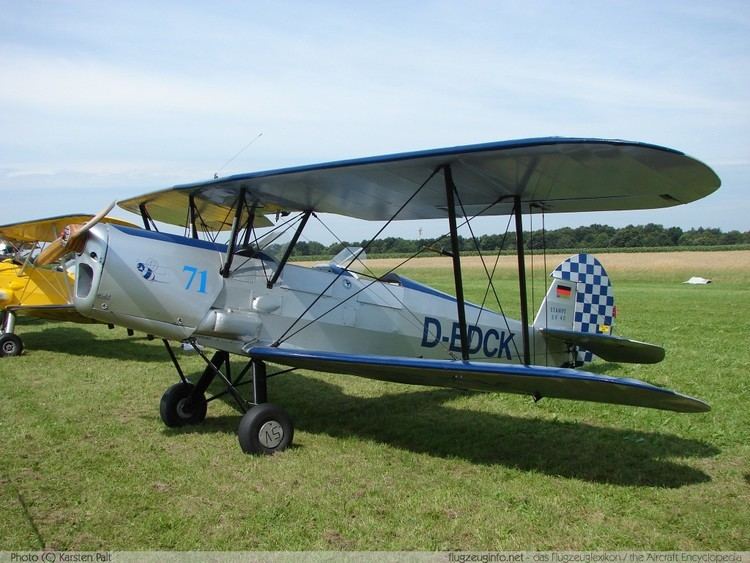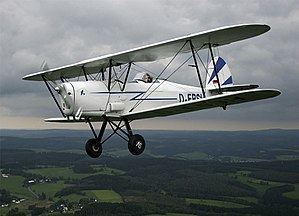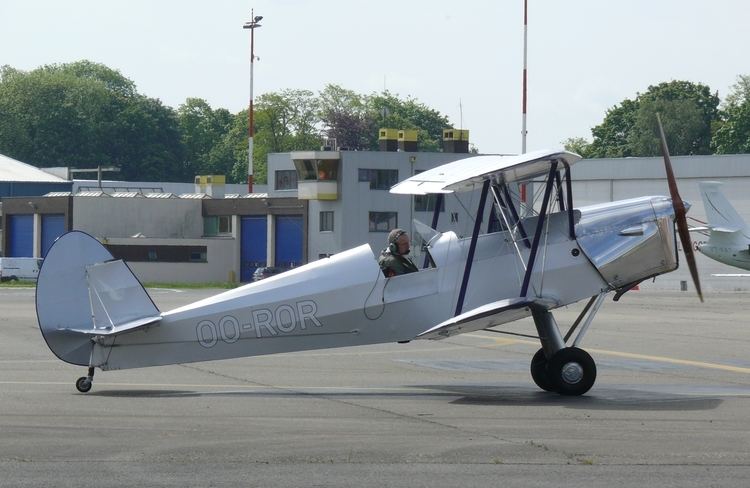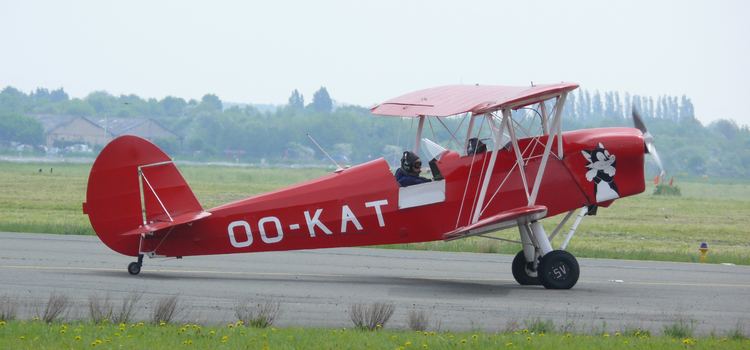Top speed 187 km/h Length 6.8 m Engine type Reciprocating engine Manufacturer Stampe et Vertongen | Wingspan 8.38 m Retired 1975 First flight 1933 | |
 | ||
The Stampe et Vertongen SV.4 (also known as the Stampe SV.4 or just Stampe) is a Belgian two-seat trainer/tourer biplane designed and built by Stampe et Vertongen. The aircraft was also built under licence in France and Algeria.
Contents

History

The SV.4 was designed as a biplane tourer/training aircraft in the early 1930s, by Stampe et Vertongen in Antwerp. The first model was the SV.4A, an advanced aerobatic trainer, followed by the SV.4B with redesigned wings and the 130 hp/97 kW de Havilland Gipsy Major.

Only 35 aircraft were built before the company was closed during the Second World War. After the war the successor company Stampe et Renard built a further 65 aircraft between 1948 and 1955 as trainers for the Belgian Air Force.

A licensed SV.4C version was built in France by SNCAN (Société Nationale de Constructions Aéronautiques du Nord), and in Algeria by Atelier Industriel de l'Aéronautique d'Alger, the two firms completing a combined total of 940 aircraft. The postwar SV.4Cs were widely used by French military units as a primary trainer. Many also served in aero clubs in France, numbers of which were later sold second hand to the United Kingdom and other countries.
Variants

A few SV.4s have been fitted with other engines, such as the Lycoming O-320, Ranger 6 or LOM 332b. At least one aircraft fitted with a Lycoming engine (OO-KAT) has been referred to by its owners as an SV.4E.
Military operators
Specifications (Post-War SV.4B)
Data from Factory drawings and [1]
General characteristics
Performance
